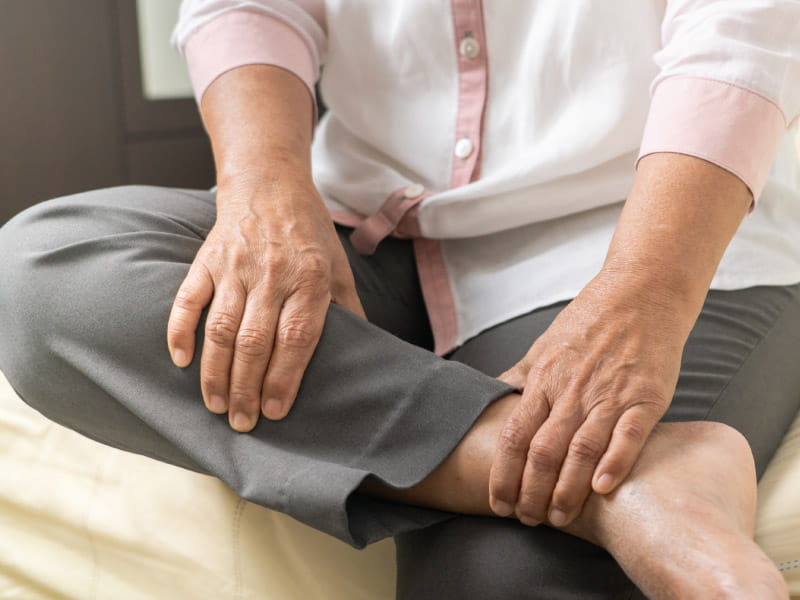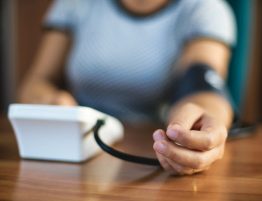
Early diagnosis and treatment of peripheral artery disease is key to preventing amputations and other cardiovascular complications, according to new guidelines that also emphasize the importance of coordinated care from a multispecialty team.
“Because of the complexities of PAD, to improve outcomes and reduce the risk of limb loss for these patients, a multispecialty care team approach that is focused on comprehensively addressing risk factor management, foot care and revascularization is needed to promote collaboration and avoid duplication of care and optimize patient outcomes,” Dr. Heather Gornik, chair of the writing committee for the new guidelines, said in a news release. Gornik is co-director of the Vascular Center at the University Hospitals Harrington Heart & Vascular Institute in Cleveland.
The guidelines provide detailed diagnostic and treatment recommendations for the disease’s four clinical presentations in the legs and feet: asymptomatic, meaning there are no symptoms; chronic symptomatic; and its two severe forms that threaten the limbs. They were published Tuesday in the American Heart Association journal Circulation and the Journal of the American College of Cardiology.
Peripheral artery disease, or PAD, primarily occurs when a buildup of fatty plaque – known as atherosclerosis – narrows the blood vessels and reduces blood flow to the legs and feet. This can significantly impair physical function, the ability to walk and quality of life.
An estimated 10 million to 12 million adults in the U.S. age 40 and older have PAD, which increases the risk of amputation, heart attack, stroke and death. Risk factors include Type 1 or 2 diabetes, smoking, high blood pressure, chronic kidney disease, atherosclerosis in other parts of the body and being 75 or older. Nearly half of people 65 and older who had a limb amputated because of PAD died within a year of surgery, according to AHA statistics.
To reduce the risk for amputations and prevent major cardiovascular events, evidence supports prescribing medications that prevent blood clotting and lower blood pressure and blood glucose levels. According to the new guidelines, all people with PAD also should be treated with high-intensity statin therapy to lower cholesterol levels. For people who are not at risk for increased bleeding, the guidelines support treatment with a combination of low-dose aspirin and low-dose rivaroxaban.
People who have or are at risk for PAD should be encouraged to quit smoking or using tobacco products.
For those who have PAD symptoms, structured exercise therapy programs are recommended. This includes community- and home-based programs as well as those delivered in a clinic or hospital setting. Numerous studies have shown such programs improve a person’s ability to walk and raise their quality of life more than standard care.
Supervised exercise therapy is considered “the gold standard” for patients with PAD, but it “is woefully underutilized despite its known health benefits and the fact that it is covered by Medicare and most health insurance plans,” Gornik said. “It has been estimated that less than 5% of patients with PAD in the U.S. are prescribed to participate in a structured, supervised exercise program.”
For people who have PAD and Type 1 or Type 2 diabetes, the guidelines recommend coordinating care to address diet, exercise, weight management, medications to control blood sugar and management of other cardiovascular risk factors, and routine checks of the feet for foot ulcer prevention.
The statement emphasizes that foot care is critical for all people with PAD, regardless of the severity of their condition, and should include patient education, preventive care and more intensive wound care.
Some people with PAD will initially show no symptoms. But if left untreated, the disease can progress to more serious forms, including chronic limb-threatening ischemia and acute limb ischemia, both of which occur when severe blockages in the leg arteries prevent proper blood flow. This can cause pain in the legs, even at rest, impair physical function and significantly increase the risk for amputations and even death.
In people with severe forms of PAD, timely diagnosis and treatment are crucial to prevent tissue loss and preserve limbs. This may include revascularization procedures to reconstruct diseased arteries. Other procedures may be needed to preserve blood flow to the limbs, heal wounds, relieve pain, maintain walking ability and prevent amputations.
The guidelines note that Black adults in the U.S. experience considerably higher rates and worse outcomes from PAD. They have a 30% lifetime risk of developing the condition, compared to 19% for their white peers. The disease also is typically diagnosed at a more advanced stage among Black adults, who experience a fourfold higher rate of major limb amputation, 30% higher heart disease mortality rate and 45% higher stroke rate.
The higher rates for racial and ethnic groups may be affected by disparities in housing, access to health care, education and socioeconomic status – factors considered social determinants of health.
“Racial and ethnic disparities in the detection, management and health outcomes of PAD have long been present in the U.S. and are an important public health issue to be addressed,” Gornik said. “These disparities highlight opportunities for initiatives focused on early disease detection and improving access to effective PAD treatments for people in under-resourced, at-risk communities.”
The guideline writing committee emphasized the need to address disparities in amputation and revascularization procedures and to improve outcomes for all people with PAD.
“It’s important to recognize the signs and symptoms of PAD and move quickly to initiate treatment to improve outcomes and reduce risks,” Gornik said. “With these updated guidelines, we have the tools necessary to make a positive impact on outcomes in our patients with PAD. Now, we need to work together to implement them as broadly as possible.”





